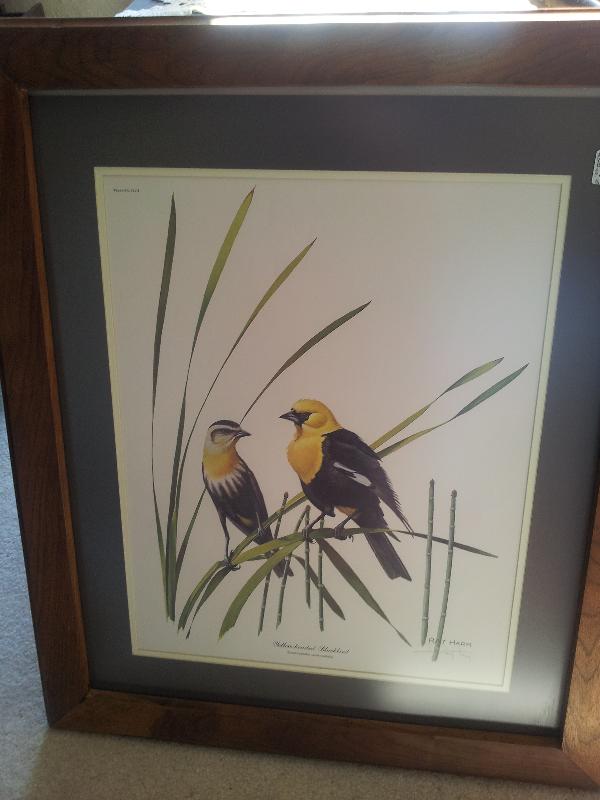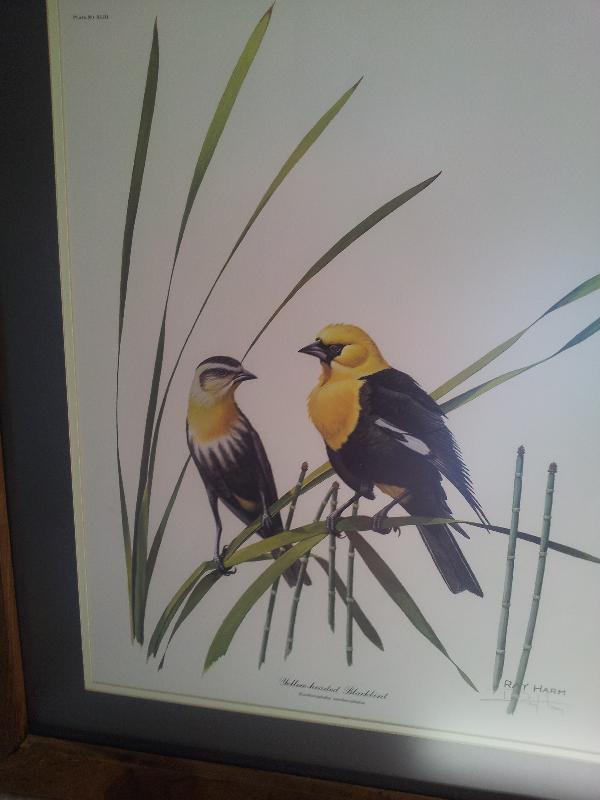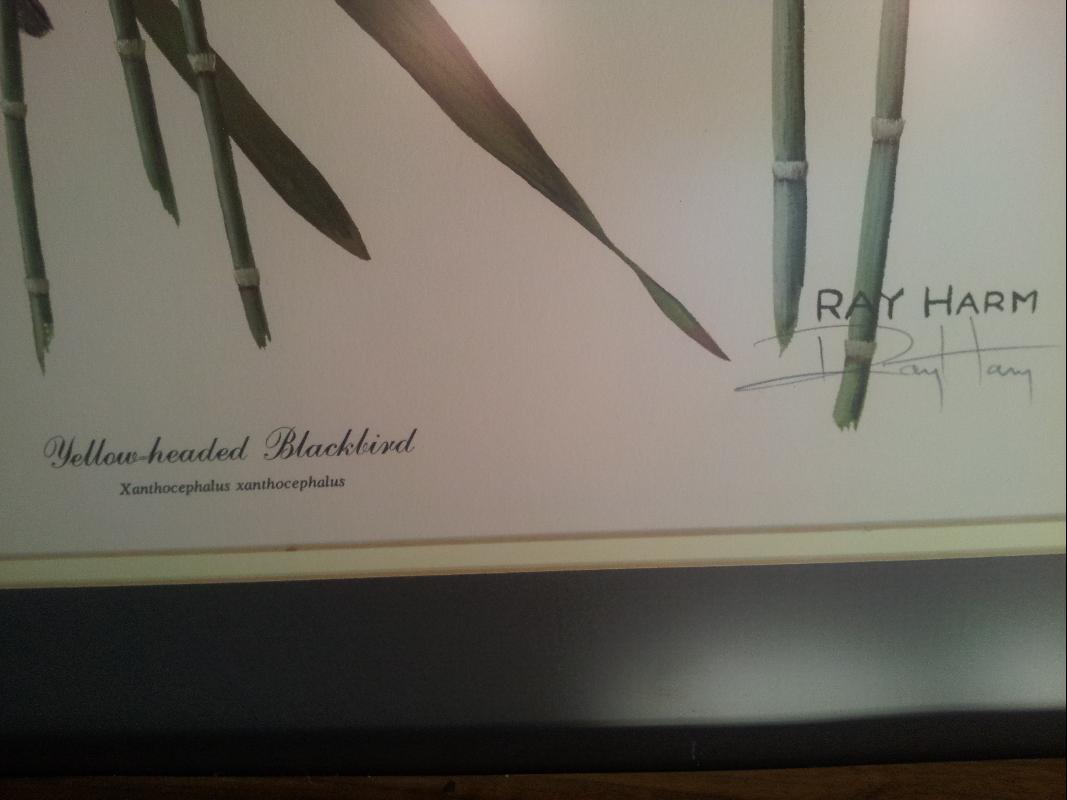West Virginia's Ray Harm Yellow Black Bird Print



Unavailable
Ray Harm (born November 9, 1926) is an American artist, best known for his paintings of wildlife, primariliy birds. He is also well known for art marketing, generally credited as the co-creator of the limited edition art print market, which supplanted the traditional method where artists sold original works on an individual basis. Limited edition art prints are now the standard method of marketing paintings and similar works to the general public. Harm was born Ray Auvil in Randolph County, West Virginia; his father was a concert violinist who also was a woodsman and herbalist. His name was changed to Harm after his parents divorced and his mother remarried to a man named William Harm. He left the West Virginia in his mid-teens to become a cowboy in the American West, eventually competing on the rodeo circuit and also training horses for the Ringling Brothers Barnum and Bailey Circus. He served in the United States Navy during World War II, which allowed him to take advantage of the GI Bill for continuing education. Harm used the opportunity to enroll in art school, and afterwards became a painter. While selling paintings one by one as was the custom in the 1950s, Harm worked in construction and horse training to make ends meet. In 1961 Harm's work attracted the attention of Wood Hannah, a businessman and art collector from Louisville, Kentucky. The two men came up with the idea of making high-quality art prints of Harm's paintings, which would be issued in limited print runs. The idea was a great success, and gave birth to a marketing method for art that has brought commercial and financial success to thousands of artists. In 1963, he was appointed the first H. L. Donovan Artist-in-residence at the University of Kentucky. Harm later wrote a weekly nature column for The Louisville Times, and was a popular speaker and lecturer. Harm was a frequent guest on the radio call-in show Metz Here, hosted for many years by Milton Metz on Louisville's WHAS-AM. In recent years, Harm has become a sharp critic of artists who copy their works from photographs, either tracing directly over them or projecting an image onto a canvas and then tracing. This practice is now widespread throughout the limited-edition art industry. Harm has prided himself on basing his paintings on his own personal sketches, taken from direct observations of wildlife. On occasion, Harm says he has used museum models of wildlife to get certain details correct, but otherwise his paintings come directly from his own work. Harm closed production of prints from his major collection around the end of the 1990s, with 195 pieces included in that collection. He still does occasional works as fund-raisers for various organizations. Harm and his wife, Cathy, eventually left Kentucky and settled on a ranch in Arizona, where he continues to work today. His son, Ray Harm Jr. (better known as "Hap"), who still lives in Kentucky, sells prints from original works by his father that were not a part of the original major collection. An archive of Harm's signed prints, newspaper clippings, field notes, black and white photographs, exhibition catalogs, gallery announcements and 53 pieces of original correspondence is housed at the Filson Historical Society in Louisville.
Morgantown Indoor Flea and Antique Market
Morgantown, West Virginia
Dealer accepts: PayPal
Shipping: Negotiated with Seller


